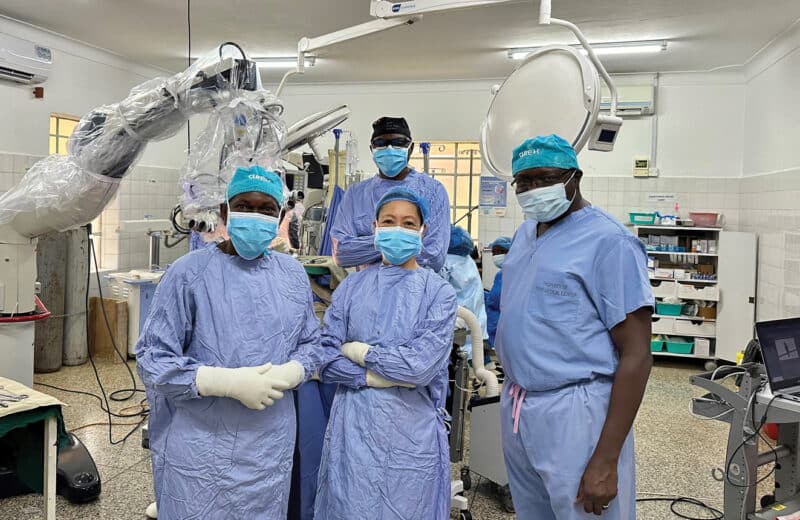Chicago Park District improves monitoring of Lake Michigan
As Memorial Day weekend rang in this year’s swim season, the Chicago Park District (CPD) began its summer monitoring of lakefront water quality, ensuring that our city’s 26-mile stretch of Lake Michigan stays safe for swimmers. Many new bacteria-detection and -prevention measures are in place, thanks to the Great Lakes Restoration Initiative (GLRI), passed in 2010 by the Obama administration.
“It’s been really great for beaches throughout the Great Lakes,” said CPD Director of Lakefront Operations Cathy Breitenbach. “It’s helped us understand water quality better and allowed us to create projects to mitigate pollution sources.”
Through the GLRI, the Park District has received several grants from the Environmental Protection Agency (EPA) to combat beach-specific problems and improve communication with the public. At the forefront of CPD’s new measures is the groundbreaking Predictive Modeling System, which uses weather data to predict lake-water quality in real time.
“If the sources of bacteria are seagulls and things washing off of the land near the beach, weather can really influence those levels,” said Breitenbach. “When the waves are higher, they turn up sediments on the bottom of the lakefront and resuspend them, which causes [bacteria] levels to rise. When it’s windy, that causes wave levels to go up. When it’s really sunny, the bacteria are killed by the sunlight.”
The CPD utilized this strong link between weather factors and bacteria levels to build more accurate statistical models.
In 2011, the CPD tapped its EPA grant to place monitoring equipment up and down the lakefront. Modified buoys measured water temperature, wave height and turbidity (cloudiness of the water). Weather stations on land assessed rainfall, sunlight intensity, humidity and wind speed. Data was compiled over the winter and shared with the United States Geological Survey to build statistical models. The result was what Breitenbach referred to as “not a forecast, but a now-cast” of water quality.
In past summers, lake-water quality could only be determined through sample testing. Five days per week, CPD staff would collect samples from Chicago beaches. These samples would then be brought to a lab, where the level of Escherichia coli (E. coli) in the water would be cultured (or grown). If 235 or more colony-forming units of E. coli were found in 100 milliliters of water, the beach where the sample was collected would be determined dangerous, and a swim advisory would be implemented.
“The EPA has determined 235 colony-forming units to be the acceptable risk level,” said Breitenbach. “It’s when 0.8 percent of swimmers would be expected to have a risk of becoming sick. So eight people out of 1,000.”
This type of E. coli, while not itself harmful in lake water, indicates the likelihood that other harmful germs might be present.
The problem with relying solely on sample testing was that it took 18 to 24 hours to get results. By the time the bacteria level at a specific beach was known, the temperature, wave height, and other outside factors would have most likely changed the bacteria level in the water. This meant that the water quality being broadcast to the public was always 18 to 24 hours behind.
Using a Predictive Modeling System keeps swimmers current on the cleanliness of Lake Michigan, a vital step forward in preventing gastrointestinal illnesses that can often arise from exposure to bacteria-infested water.
Physical samples are still collected five days a week at Chicago beaches, however, now their results are synced with the Predictive Modeling System to ensure its accuracy.
“We’re just now starting to use it [the Predictive Modeling System] for actual management,” said Breitenbach. “This is the first time you’re going to see whether we have an advisory or not, determined by the model rather than just by the testing.”
This year, 15 of the park district’s 24 beaches are able to use the system. Breitenbach says the reason six beaches are left out is because they’re still gathering data to make sure the system will be accurate enough for use. Each beach has it’s own variables that affect the data so the system cannot be carte blanche and accurate. On these six beaches, the CPD does, however, still test.
Beyond improving detection, the CPD has implemented initiatives to stop harmful bacteria at its source.
The Beach Ambassador program, now in its second year, disperses environmental allies to the beaches where they survey citizens and educate them as to how they can help keep the lakefront clean. Simple things, like picking up litter and not feeding the birds, can have a significant impact on lake-water quality.
The ballooning seagull population, in particular, has led to a spike in swim advisories issued in recent years, due to the polluting effect that their waste has in shallow lake water. In 2008, CPD retaliated with a newly minted Gull Harassment program. It enlists specially trained Border Collies to scare off, or harass, huge flocks of gulls.
Keeping the masses up-to-date on the water quality of Chicago’s lakefront is the final step to ensuring swimmer safety.
Flags indicating water quality are posted near the lifeguard stands at every beach. A green flag signifies calm water and cleanliness, while a yellow flag warns that a swim advisory is in effect. Under a swim advisory, swimming is permitted, though caution is advised. A swim ban—signaled by a red flag—is issued only in severe weather or when water conditions are hazardous.
Chicagoans headed for the beach can monitor lake conditions by calling 312-74BEACH or texting (312)715-SWIM. Swim advisories and bans are also posted on CPD’s Facebook and Twitter pages.
Thanks to innovative water monitoring measures and new programs that keep the public informed, Chicagoans can count on a safer summer on Lake Michigan.
Published June 8, 2012












